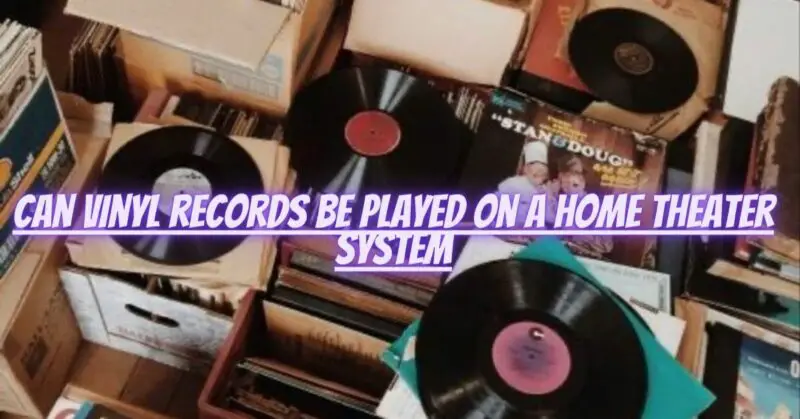Vinyl records are a beloved medium for music enthusiasts, known for their warm sound and nostalgic appeal. While traditional turntables and stereo systems are commonly used to play vinyl records, you may wonder if it’s possible to enjoy your vinyl collection on a modern home theater system. In this article, we will explore the compatibility and considerations of playing vinyl records on a home theater system, allowing you to immerse yourself in the world of vinyl through your existing setup.
- Phono Preamp and Inputs: Vinyl records require a phono preamp to amplify the audio signal from the turntable and bring it to line level, which is compatible with home theater systems. Check if your home theater receiver or amplifier has a dedicated phono input or a built-in phono preamp. If not, you will need to connect an external phono preamp between the turntable and your home theater system.
- RCA Connections: Most turntables output audio signals using RCA cables. Check if your home theater system has RCA inputs or audio inputs labeled as “AUX” or “Analog In.” Connect the RCA cables from the turntable to these inputs. If your home theater system only has HDMI or digital inputs, you will need an additional analog-to-digital converter to convert the analog signal from the turntable to a digital signal compatible with your system.
- Selecting the Correct Input: Once your turntable is connected to the home theater system, select the appropriate input source on your receiver or amplifier. This may be labeled as “PHONO,” “AUX,” or the specific input name you assigned during setup. Ensure the volume levels are set appropriately before playing the vinyl record.
- Speaker Configuration: Home theater systems typically have multiple speakers configured for surround sound. Ensure that the audio settings on your receiver or amplifier are adjusted to match your speaker configuration and listening preferences. You may want to select a stereo or multi-channel audio mode to optimize the audio output for your vinyl records.
- Calibration and Equalization: To achieve the best sound quality, consider calibrating and equalizing your home theater system specifically for vinyl playback. Use the built-in calibration tools on your receiver or amplifier to ensure proper speaker balance and audio levels. Additionally, explore the equalizer settings to fine-tune the sound according to your preferences, emphasizing the warm and rich characteristics of vinyl playback.
- Experimenting with Sound Modes: Many home theater systems offer various sound modes and effects to enhance the audio experience. While these modes are primarily designed for movies and TV shows, you can experiment with different modes to find one that complements your vinyl playback. However, keep in mind that purists may prefer a direct, unaltered audio signal for the most authentic vinyl experience.
- Volume Control and Dynamics: Vinyl records can have varying levels of dynamics, with quieter and louder passages within the same album. Adjust the volume control on your home theater system accordingly to maintain a consistent listening experience. Avoid sudden volume changes or excessive boosting, as this can introduce distortion and impact the fidelity of the vinyl playback.
Conclusion: Playing vinyl records on a home theater system can be a rewarding experience, blending the nostalgic charm of vinyl with the immersive audio capabilities of modern technology. By considering the compatibility, connections, calibration, and equalization, you can enjoy your vinyl collection through your existing home theater setup. So, dust off those vinyl records, connect your turntable to your home theater system, and embark on a sonic journey that brings together the vintage allure of vinyl with the captivating power of a home theater environment.


